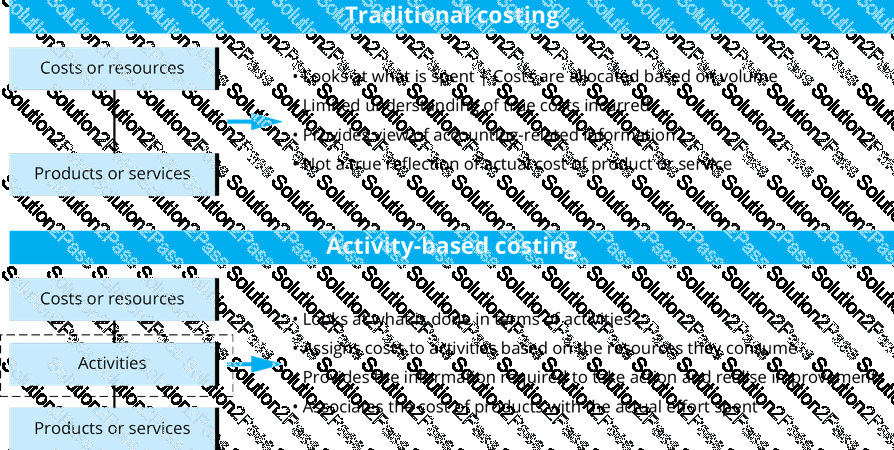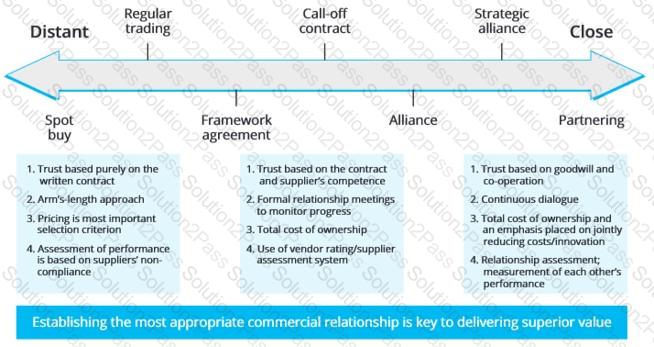L4M5 CIPS Commercial Negotiation Free Practice Exam Questions (2025 Updated)
Prepare effectively for your CIPS L4M5 Commercial Negotiation certification with our extensive collection of free, high-quality practice questions. Each question is designed to mirror the actual exam format and objectives, complete with comprehensive answers and detailed explanations. Our materials are regularly updated for 2025, ensuring you have the most current resources to build confidence and succeed on your first attempt.
Cost and price analysis is very important for buyers when they are preparing for a negotiation with supplier. Which of the following is a benefit of knowing supplier's fixed costs?
Which of the following are signs indicating that the trust between buyer and supplier has improved? Select TWO that apply.
Which of the following are most likely to help buyer become preferred customer in supplier's perspective? Select TWO that apply.
Maria, an NHS buyer, needs cost savings due to budget cuts. She plans to achieve savings with a collaborative supplier. Which negotiation approach should she use?
Which type of question is most effective for checking facts in negotiation?
Representatives from South African Department of Health is negotiating the price of hospital drugs with US pharmaceutical companies. Which of the following are most likely to be macro factors that influence the outcomes of the negotiation? Select TWO that apply.
Commercial negotiation ends at the award of a contract. Is this statement true?
In a commercial negotiation, a procurement professional believe that the larger the order quantity from buyer, the lower the supplier's average costs. Is this assumption true?
A buyer requests a £2,000 reduction in price at the end of negotiations. The supplier nods and smiles, shakes hands, and leaves. Should the buyer believe the reduced price is agreed?
Which of the following are typical characteristics of activity-based costing (ABC) method? Select TWO that apply.
Which of the following is a description of mark-up?
Professional buyer is planning for the next negotiation of a simple one-off contract. This negotiation is typified by which of the following? Select TWO that apply.
Mike is a junior buyer who has been working for a manufacturing organisation for two years, specializing in purchasing research. Over this time, he has built good relationships within his team and with other departments. Which of the following sources of power is Mike most likely to possess?
Active listening in negotiation includes which of the following activities?
1. Hearing
2. Interpreting
3. Rapport
4. Influence
Which of the following are sources of personal power?
Legitimate power
Strategic power
Expert power
Leverage power
Which of the following is a key element to developing high-trust supplier relationships?
When considering a new supply source for a product, a procurement professional will review the suppliers' quotations before a supplier negotiation. Which of the following is a direct cost associated with the product within a potential supplier's quotation?
Which of the following are most likely to be abilities of a person with high emotional intelligence? Select TWO that apply.
A competitive win-lose distributive approach to a negotiation is seeking to:
A break-even analysis uses which aspects as part of the calculation?
Fixed cost
Buying cost minus variable cost per unit
Variable cost
Selling price minus variable cost per unit

 Graphical user interface, text, chat or text message, website Description automatically generated
Graphical user interface, text, chat or text message, website Description automatically generated Timeline Description automatically generated
Timeline Description automatically generated